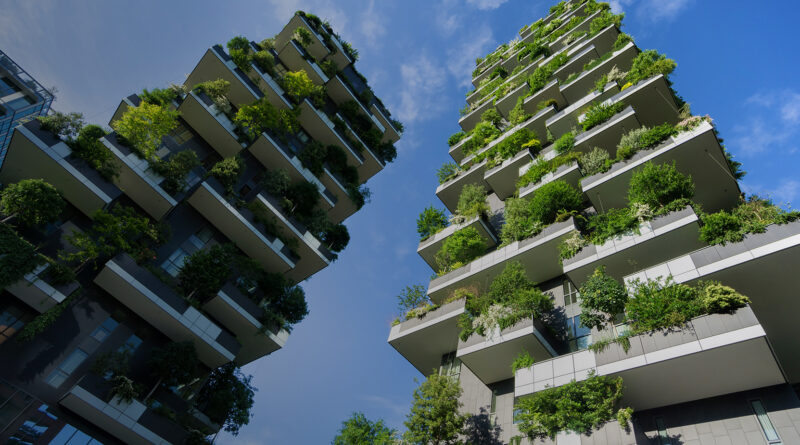What is sustainable design?
Sustainable design aims to completely eliminate the negative environmental impacts of a built project through brilliant and sensitive design.
Sustainable design aspects need renewable sources and its impact on the environment is to be as little as possible. And connect the people with the natural environment.
“The people’s problem is not a pollution problem but a design problem. If the people were to design the tools, furniture, products, factories, homes, and cities from the beginning with more intelligence. They wouldn’t even think about pollution, scarcity, or waste. Good design makes abundance, endless reuse, and more pleasure.” – By authors William McDonough and Michael Braungart, 2013.
Everyday design decisions are made everywhere. Affecting sustainable development or saving for the needs of the coming future generations of life on Earth. Sustainability and design are closely related. It is simply that what we design is our future. You can learn more about sustainable design and sustainability by asking experts in the field or by going to CYPRESS to get sustainable design for civil and environmental engineering projects.
The term ‘design’ here refers to practices applied in making products and services as well as business strategy and innovation, all of which serve sustainability, Sustainability can be considered as a property of continuity as what is sustainable can built continually into the future,
Some application that are applied by sustainable design are:
- Sustainable urban planning
- Landscape and garden design
- Civil engineering design
- Sustainable architecture
- Interior design
- Sustainable agriculture
- Industrial and consumer product design
but for sustainable design, there are some conceptual problems that we need to understand and address as follows
What are the conceptual problems for Sustainable design?
Unsustainable investment
There is a problem when resource boundaries are difficult to define so increasing investment in response to diminishing productivity may appear profitable but may lead to a breakdown. The issue of increased investment in diminishing productivity concerning the causes of the collapse of civilization has also been studied by Joseph Tainter and others.
Waste prevention
Experience so far has shown that there is no completely safe way to eliminate waste, 80 million tons of waste is generated in the UK only every year, all forms of elimination have negative effects on the environment and public health. Landfills polluted the drinking water and burned garbage contaminated the air, water, and soil.
All attempts to dispose of the waste after its production have failed to eliminate the resulting environmental impacts, thereby, the only way to avoid environmental damage from waste is to prevent waste basically from being produced.
To prevent pollution is to change the production method of the products or remove the source of the problem. This does not mean dispensing with it but performing it differently, for example, preventing contaminated waste from single-use beverage vessels does not mean dispensing drinks but rather using refillable bottles.
It’s shown that any development related to resources will have two main sources of solid waste: materials that are purchased and used by the facility and materials brought by visitors into the facility.
The following strategies may be applied to both to prevent waste although different implementation methods are required:
- Use non-toxic products that produce the least amount of waste possible
- Anaerobic digestion of biodegradable waste
- Reuse on-site materials or collect materials suitable for recycling off-site
- Using fewer resources: means producing less waste and thereby reducing the impact on the environment
Loss of biodiversity
An unsustainable environmental design or the built project itself may decrease the biodiversity of the area; the improper design of rapid transit roads is forcing thousands of animals into fragmented and smaller habitat areas.
The mating cycle can be affected by water dams that are poorly designed and can also affect fisheries stocks in the affected area.
Diminishing returns
The principle that all directions of progress are implemented and ended with a decrease in productivity is evident in the typical technology life cycle S-curve as discussed in life cycle assessment and industrial ecology.
The result of reaching the natural limits is diminishing returns, the Common business management exercise is to examine and study diminishing returns in any direction of effort as a sign of diminishing opportunities and an indication to search for new opportunities elsewhere.
Climate change
Global warming and climate change are the most clear and obvious reasons that may affect the sustainable design.
The perception of the overwhelming threat to all of humanity today has increased the necessity to take action against multi-faceted climate change in the past thirty years.
Climate change can be attributed to various errors, inappropriate design (or sustainable design) is one of them, most products, buildings, and industries still have high-consuming energy and are the reason for a lot of environmental contamination while there are many steps are taken in the sustainability field.
What makes Sustainable design important?
Sustainable design has many benefits that make it very important and necessary in our lives, including:
- Site optimization
- Maintenance and operational practices optimization
- Reduce consumption of non-renewable energy
- Water conservation and protection
- Environment enhancement




